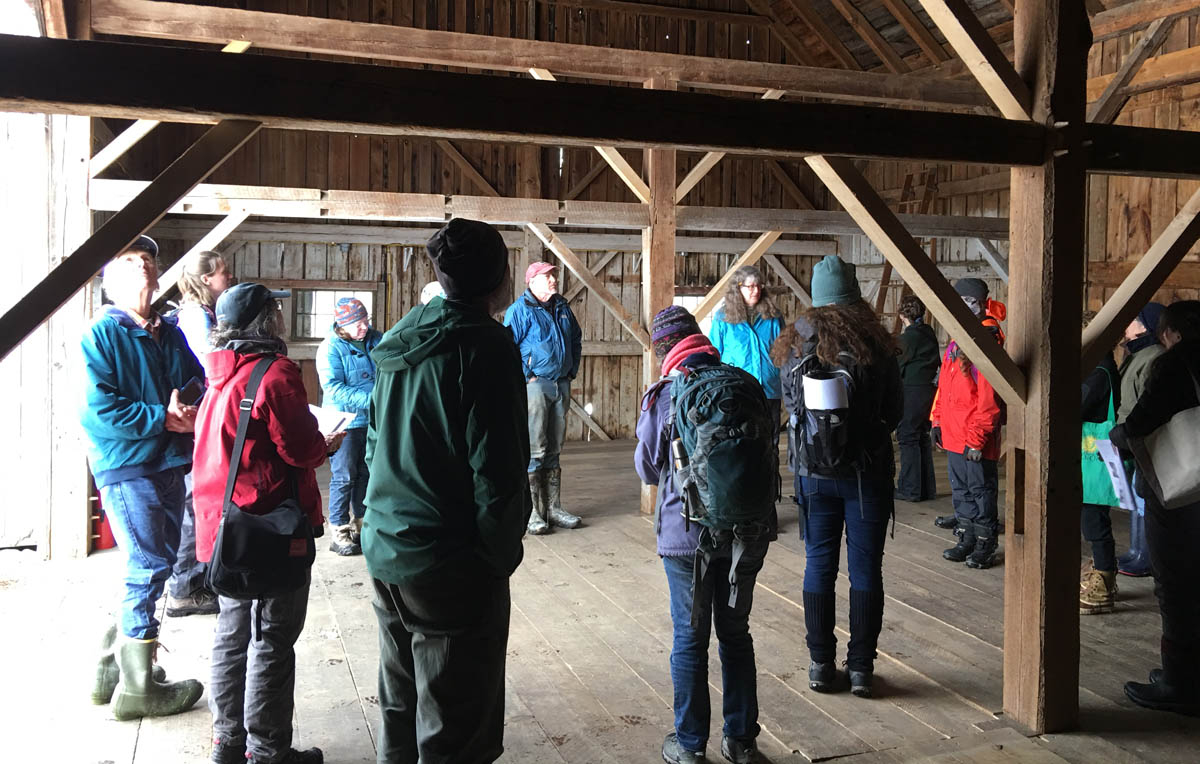
Guest blog by Jane Dorney
Vermont Master Naturalists from the Bristol Five Towns area visited the Wells Farm recently as part of an all-day field trip. The day’s goal was to explore the human use of the local landscape over the last 250 years, and how that was tied to the natural landscape. As a classic Vermont hill farm with its old barns, open fields, stone walls, and forest growing back in on the old fields, the Wells Farm had a lot of stories to tell.

The group was led by geographer Jane Dorney, who started the tour with the barns. By looking at how the barns were used – the bays for hay, the stables for cows and work horses, the overhead storage area for wheat and oat sheaves, and the central threshing floor – the group could infer how the farm’s landscape in the nineteenth century was used. The fields of wheat and oats, the pastures, and the woodlot that supplied the timber for the barn itself were easier to imagine after spending time understanding the barns themselves. The group could also see how the barns had been reconfigured to evolve through the changes in agriculture over the 200 years that had elapsed since the farm family had first settled here.
The group next looked at the field patterns of the farm, both from what could be seen from the barnyard, and from a LiDAR image of the site. Stone walls could be seen around the edges of the meadows that surround the barns now, and the LiDAR showed more in the woods up above the barnyard. The source of the stones was from advancing glaciers leaving till at their base, but the stone’s placement into lines of walls showed the past use of a plow in that field. Open fields areas had a new “crop” of frost-heaved stones each spring that needed to be picked out to avoid damaging the plows used to prepare the soil to plant farm seeds. The stone walls helped the group ground the inferences they had made about the wheat and oat fields that had been here with the actual landscape spread out in front of them. The walls in the woods uphill were also part of story of more recent forest regeneration as the hill farms were abandoned later in the twentieth century.
In the end, the stories the group were able to read from the Wells Farm gave participants a concrete example of how one farm had evolved through time. By seeing that similar stories were repeated many times over across the Vermont landscape, they came away with a deeper understanding of the place we inhabit and love.





